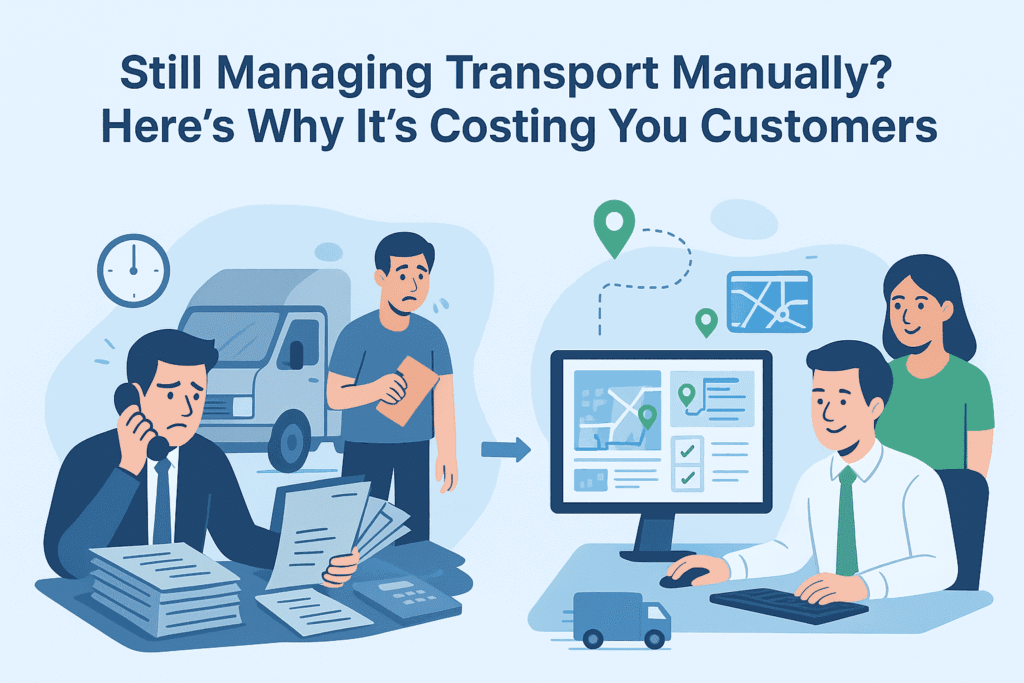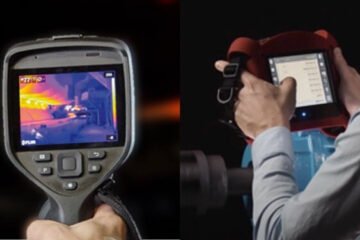Introduction
If you’re still managing transport with phone calls handwritten notes and endless Excel sheets you probably already know the stress that comes with it. On the surface it might feel manageable. After all you’ve been doing it this way for years. But look closer are deliveries always on time? Do your drivers always get clear instructions? And when a customer asks Where’s my order? Do you really have an answer ready?
The truth is manual transport management doesn’t just make your life harder it silently eats away at customer trust. And once customers start losing confidence they don’t complain much they simply stop coming back.
The Everyday Struggles of Manual Transport
Chasing After Updates
How many times have you found yourself calling drivers one after another just to find out where a delivery is? By the time you get the update and pass it to the customer the customer is already frustrated. This constant back and forth wastes your time and makes customers feel like they’re in the dark.
Promises That Fall Apart
It happens so often: sales promises the customer a delivery time but operations can’t keep up because the vehicle is stuck somewhere the stock wasn’t updated or routes clashed. To the customer it looks careless. To the business it looks like lost loyalty.
When Mistakes Become Normal
A wrong address written down in a hurry a delivery sheet misplaced or a driver misunderstanding instructions manual systems leave too much space for human error. And when customers face repeated mistakes they stop trusting the service no matter how good your intentions are.
No Room for Growth
Handling 10 deliveries a day manually? Maybe it works. But what happens when your business grows to 100 deliveries a day? Suddenly the phone doesn’t stop ringing drivers are confused and you’re drowning in calls and corrections. What once looked manageable now feels impossible.
Why Customers Notice These Problems More Than You Think
From inside the business delays or mix ups might feel like small hiccups. But from the customer’s side it’s their order their money their time. Imagine waiting for an important shipment and not knowing where it is. Customers don’t forget that feeling and they definitely don’t forgive it easily.
Competitors who use smarter systems are able to give customers real time updates accurate delivery windows and consistent service. In comparison manual management feels outdated and unreliable. Customers quickly realize where they’ll get a smoother experience.
How Software Fixes What Manual Work Breaks
Now let’s be clear: software isn’t magic. But it does solve the exact pain points manual systems create every day.
- No More Guesswork – Instead of calling drivers you and your customers can see the delivery location in real time.
- Clear Promises Kept Promises – Delivery schedules and routes are planned digitally so customers get accurate timelines.
- Fewer Mistakes – Once addresses delivery details and stock are stored in the system there’s no risk of losing or misreading them.
- Visibility for Everyone – From sales to drivers to customers everyone can see the same information. No more silos.
- Scalable Process – Whether you’re handling 10 orders or 1,000 the system works the same way. Growth doesn’t mean chaos anymore.
This isn’t about buying software. It’s about closing the gaps that manual work leaves wide open.
Final Thoughts
Running transport manually might feel familiar but it slowly pushes customers away. Every delayed delivery every missed update every small mistake is a reminder to your customer that they can get better service elsewhere.
Transport management software isn’t about adding extra features it’s about removing the problems that manual work creates. It gives your team control gives your customers confidence and gives your business the ability to grow without breaking down.
ask yourself: how many customers can you afford to lose before making the switch?





